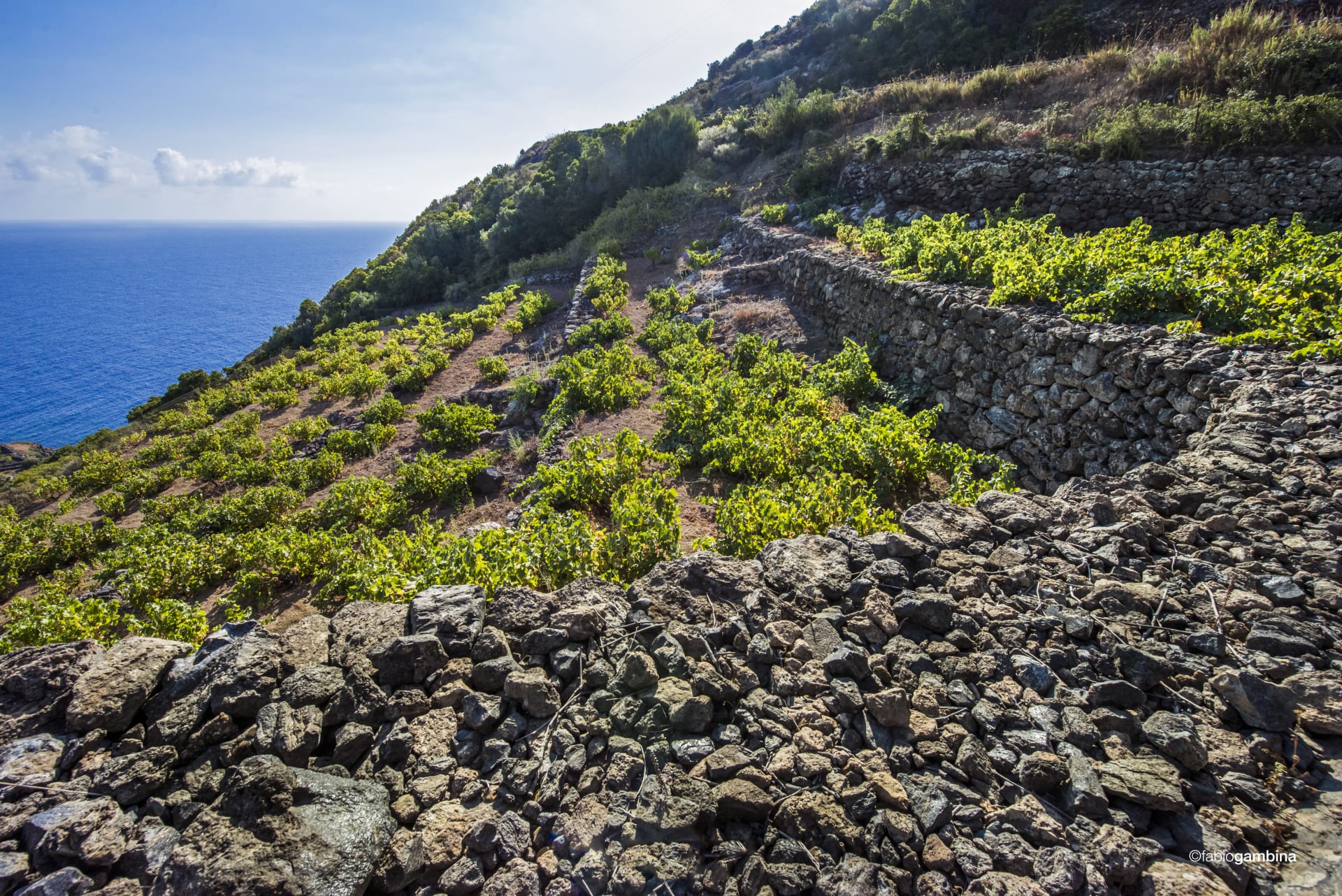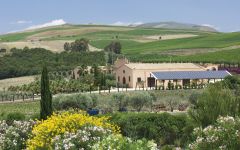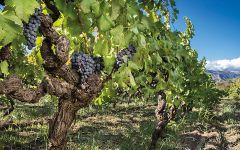Donnafugata Ben Rye (375ML half-bottle) 2022
- Vinous
-
Wine
Spectator -
James
Suckling
Last call - only 3 left!



Product Details
Your Rating
Somm Note
Winemaker Notes
The 2022 Ben Ryé has a golden color with bright amber hues. The very intense bouquet ranges from fruity notes of apricot, yellow peach and candied orange peel to tropical hints of mango and papaya, followed by hints of Mediterranean scrub. On the palate, the fruity hints of aromatic herbs are combined with sweet nuances of honey. Intense and persistent, with an extraordinary balance between freshness and sweetness, Ben Ryè is a captivating Passito di Pantelleria, among wines most popular desserts in the world.
Professional Ratings
-
Vinous
Burnt blood orange, autumnal spices, candied ginger, dried nectarines and a lifting hint of mint create a kaleidoscopic bouquet as the 2022 Ben Ryé blossoms in the glass. Weighty and velvety in feel yet remarkably fresh, it floods the palate with masses of tropical citrus, mango and papaya, all supported by a core of zesty acidity. The 2022 finishes with dramatic length and concentration. A peach nectar resonance and savory spices linger on and on. The 2022 is sure to join the ranks of the best vintages of Ben Ryé. It finished at 200 grams per liter of residual sugar.
-
Wine Spectator
A gorgeous sweetie, showing a fragrant orange blossom nose, with an enticing range of glazed tangerine, apricot, dried mint and candied ginger, plus rich hints of graham cracker, vanilla and white chocolate. Long and lightly mouth-coating, with tangy blood orange peel acidity focusing this through the juicy finish. Drink now through 2034.
-
James Suckling
A super rich and intense wine with aromas of peaches, dates, pine resin, dried figs, almonds and candied oranges. Full-bodied, it feels oily in the glass and sweet if not caramelized on the palate, with apricot flavors and refreshing acidity that’s not quite enough to balance the sugar. Iodine in the finish.
Other Vintages
2021-
Wine
Spectator -
James
Suckling
-
James
Suckling
-
James
Suckling -
Wine
Spectator
- Decanter
-
James
Suckling -
Robert
Parker
- Decanter
-
James
Suckling
- Decanter
-
Robert
Parker -
Wine &
Spirits -
Wine
Enthusiast -
James
Suckling -
Wine
Spectator
- Decanter
-
James
Suckling -
Wine
Enthusiast -
Robert
Parker -
Wine
Spectator
- Decanter
-
Wine
Enthusiast -
Wine &
Spirits -
Wine
Spectator -
Tasting
Panel
-
Robert
Parker -
Wine &
Spirits -
Wine
Spectator
-
James
Suckling -
Robert
Parker -
Wine
Spectator
-
Wine
Spectator - Decanter
-
Wine
Spectator -
James
Suckling
-
Wine
Enthusiast -
Wine
Spectator
-
Wine
Enthusiast -
James
Suckling -
Wine
Spectator -
Robert
Parker
-
Wine
Spectator -
Wine
Enthusiast -
Robert
Parker
-
Wine
Enthusiast -
James
Suckling -
Wine &
Spirits -
Robert
Parker








In 1983, the experienced winegrowing couple Giacomo and Gabriella Rallo decided to invest in a new Sicilian project that they called “Donnafugata.” Their vision was to create a contemporary winegrowing operation based around three sites in western Sicily and to produce a range of international and indigenous variety wines to showcase the potential of Sicily.
Today the estate is comprised of an historic family cellar in Marsala that dates back to 1851, a 667-acre estate at Contessa Entellina planted to a diverse range of grapes, and a third cellar on the volcanic island of Pantelleria, where Donnafugata cultivates 168 acres of Zibibbo vineyards. The company employs state-of-the-art, sustainable viticulture techniques at all three estates for wines of the highest quality.
At Donnafugata, stewardship of the environment is taken as seriously as the production of wine. The winery was one of the first wineries in Italy to produce all of its electricity from solar energy, taking advantage of the bountiful Sicilian sunshine, and in 2015 the island of Pantelleria was given UNESCO certification recognizing its unique vine training method.
The name Donnafugata refers to the novel by Tomasi di Lampedusa entitled Il Gattopardo (The Leopard). A name that means “donna in fuga” (woman in flight) and refers to the story of a queen who found refuge in the part of Sicily where the company’s vineyards are located today.

Apart from the classics, we find many regional gems of different styles.
Late harvest wines are probably the easiest to understand. Grapes are picked so late that the sugars build up and residual sugar remains after the fermentation process. Ice wine, a style founded in Germany and there referred to as eiswein, is an extreme late harvest wine, produced from grapes frozen on the vine, and pressed while still frozen, resulting in a higher concentration of sugar. It is becoming a specialty of Canada as well, where it takes on the English name of ice wine.
Vin Santo, literally “holy wine,” is a Tuscan sweet wine made from drying the local white grapes Trebbiano Toscano and Malvasia in the winery and not pressing until somewhere between November and March.
Rutherglen is an historic wine region in northeast Victoria, Australia, famous for its fortified Topaque and Muscat with complex tawny characteristics.

A large, geographically and climatically diverse island, just off the toe of Italy, Sicily has long been recognized for its fortified Marsala wines. But it is also a wonderful source of diverse, high quality red and white wines. Steadily increasing in popularity over the past few decades, Italy’s fourth largest wine-producing region is finally receiving the accolades it deserves and shining in today's global market.
Though most think of the climate here as simply hot and dry, variations on this sun-drenched island range from cool Mediterranean along the coastlines to more extreme in its inland zones. Of particular note are the various microclimates of Europe's largest volcano, Mount Etna, where vineyards grow on drastically steep hillsides and varying aspects to the Ionian Sea. The more noteworthy red and white Sicilian wines that come from the volcanic soils of Mount Etna include Nerello Mascalese and Nerello Cappuccio (reds) and Carricante (whites). All share a racy streak of minerality and, at their best, bear resemblance to their respective red and white Burgundies.
Nero d’Avola is the most widely planted red variety, and is great either as single varietal bottling or in blends with other indigenous varieties or even with international ones. For example, Nero d'Avola is blended with the lighter and floral, Frappato grape, to create the elegant, Cerasuolo di Vittoria, one of the more traditional and respected Sicilian wines of the island.
Grillo and Inzolia, the grapes of Marsala, are also used to produce aromatic, crisp dry Sicilian white. Pantelleria, a subtropical island belonging to the province of Sicily, specializes in Moscato di Pantelleria, made from the variety locally known as Zibibbo.
